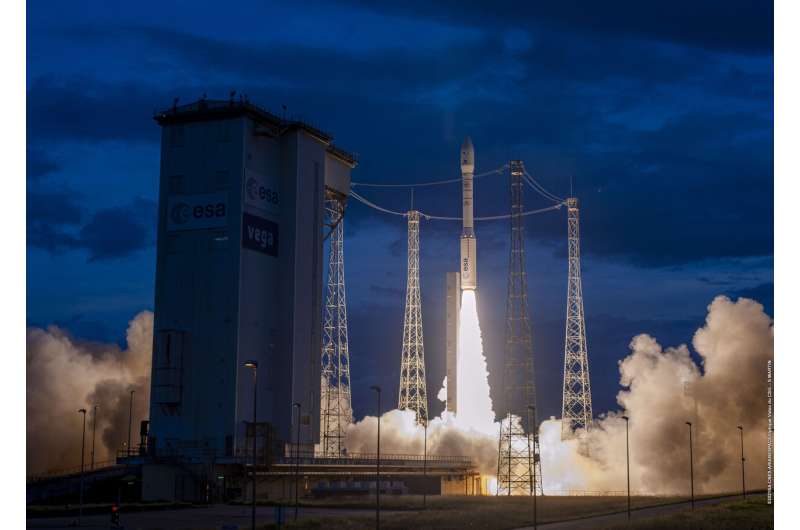Vega has also mastered "ride sharing," to cost-effectively put multiple satellites into orbit on a single flight. This launch vehicle has set the stage for the imminent first flight of a bigger, more capable variant, Vega-C—delivering more payload and greater flexibility for the same cost. And, with its industrial partners, ESA is developing a further evolution, Vega-E, to reduce program costs while boosting performance.
For Vega's inaugural flight, VV01, the Italian space agency, ASI, supplied the principal payload. LARES (LAser RElativity Satellite) was an experiment to measure Earth's distortion of local space-time, the so-called "frame-dragging" effect predicted by Einstein's theory of general relativity.
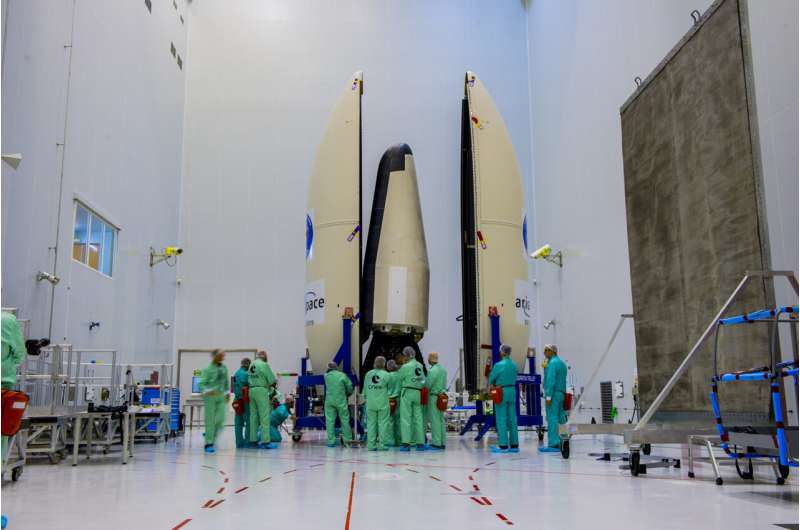
VV01 capped more than a decade of work on a small vehicle to complement ESA's heavy lifter, Ariane 5, and the upcoming Ariane 6. ESA and Arianespace partly filled that gap by bringing the medium-lift Soyuz rocket to French Guiana from 2011.
But the breakthrough was Vega. Conceived by ASI, Vega became an ESA program in 1998. Key partners include prime contractor Avio of Italy.
Vega combines three solid-fuel stages with a fourth, liquid-fuelled stage. Solid fuel motors cannot be throttled, stopped or restarted—after ignition they burn at full-power until the fuel runs out—but they provide exceptional liftoff thrust without the tanks, fuel pumps and fuel handling infrastructure needed for liquid propellants. These economical motors can be manufactured and fuelled in advance to be safely stored until needed for launch.
The liquid-fuelled fourth stage provides fine control of position thanks to its stop-start-throttle capabilities, so Vega can accurately deliver single or multiple payloads to different orbits on one launch. This flexibility was demonstrated on flight VV16 in September 2020, when Vega first carried its Small Spacecraft Mission Service (SSMS) dispenser for light satellites. The ride share mission orbited seven microsatellites and 46 cubesats.
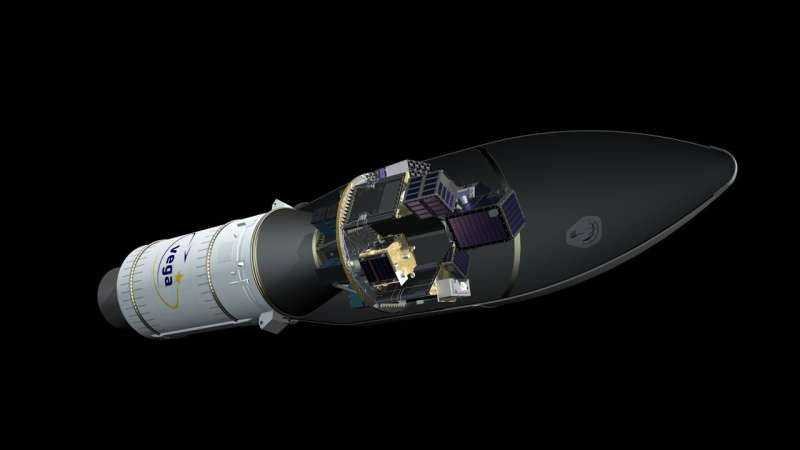
Continuous development
While Vega team members will surely take a moment today to reflect on a memorable decade, their focus is on the future—and the inaugural flight of Vega-C.
Like Vega, Vega-C features three solid-fuel stages and a liquid-fuelled fourth stage. But Vega-C brings two great improvements. One is an extra 800 kg payload capacity—an increase of more than a third, to about 2.2 metric tons—but for a similar launch cost.
Vega-C features a new, more powerful first stage, P120C, based on Vega's P80. Atop that is a new second stage, Zefiro-40, and then the same Zefiro-9 third stage as used on Vega. The new AVUM+ fourth stage can remain operational in space for longer than Vega's AVUM, to enable extended missions.
With its larger main stages and bigger fairing, Vega-C measures 34.8 m high, nearly 5 m taller than Vega.
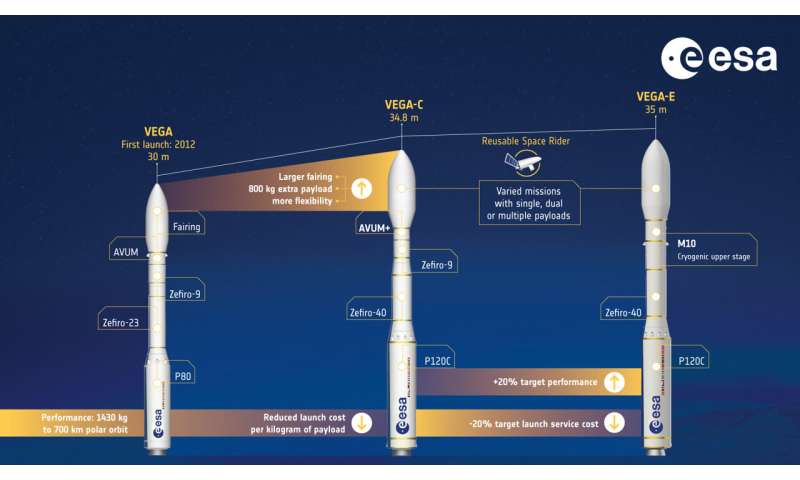
Small, versatile, and efficient — the Vega launch system is Europe’s way of launching light satellites to multiple orbits in a single launch to respond to different market opportunities. Credit: ESA 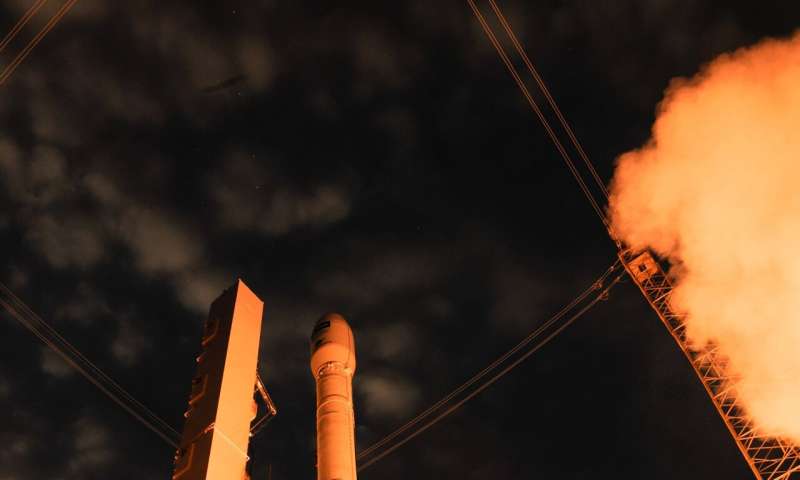
ESA’s Earth Explorer Aeolus satellite lifted off on a Vega rocket from Europe’s Spaceport in Kourou, French Guiana, on 22 August at 21:20 GMT (23:20 CEST). Using revolutionary laser technology, Aeolus will measure winds around the globe and play a key role in our quest to better understand the workings of our atmosphere. Importantly, this novel mission will also improve weather forecasting. Credit: ESA - S. Corvaja
Equally important is another Vega-C innovation. Its P120C first stage will do double service, with either two or four of these acting as strap-on boosters for Ariane 6. By coordinating Vega-C and Ariane 6 development, ESA and its partners are realizing a strategy of continuous, agile development. Vega-E, for example, is being readied to add another 20% payload capability while reducing costs, from as soon as 2025.
ESA's Director of Space Transportation Daniel Neuenschwander observes, "Major ongoing development programs with Ariane 6 and Vega-C will allow Europe to maintain its independent access to space, which is a strategic priority in a world where technology, business and politics move very quickly."
"We have to keep pushing forward, to make sure Europe is ready for the future."
Explore further



